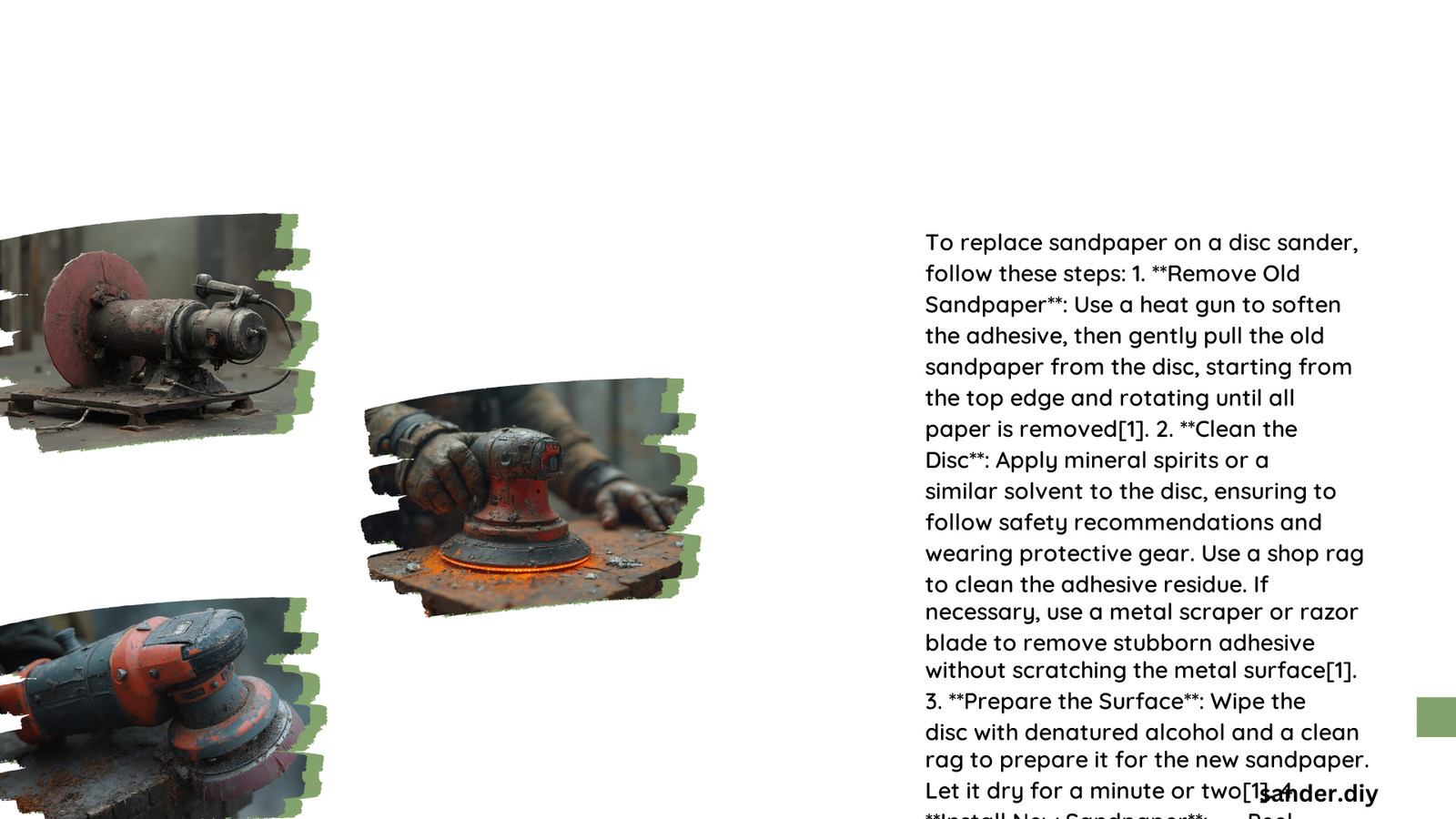Disc sander replacement paper is an essential component for maintaining and optimizing the performance of disc sanders. These abrasive sheets come in various grits, sizes, and materials, each designed for specific sanding tasks. From coarse grits for heavy material removal to fine grits for polishing, choosing the right replacement paper is crucial for achieving desired results in woodworking, metalworking, and other applications.
What Are the Specific Grit Sizes for Disc Sander Replacement Paper?
Disc sander replacement papers are available in a wide range of grit sizes, each suited for different stages of the sanding process:
- Coarse Grits (24-60):
- Used for heavy material removal
- Examples: 24, 30, 36, 40, 50, and 60 grit
-
Applications: Preliminary hardwood floor sanding, removing paint or varnish, sanding out deep gouges
-
Medium Grits (80-120):
- Versatile and used for final shaping work
- Common grits: 80, 100, and 120
-
Applications: Removing marks left over from planing, smoothing surfaces after coarse grit sanding
-
Fine Grits (150-220):
- Used for creating a smooth, polished finish
- Examples: 150, 180, 220 grit
-
Applications: Sanding wood before applying a finish, polishing metal
-
Extra Fine Grits (240 and above):
- Used for achieving the smoothest finish
- Grits: 240, 320, 400, and higher
- Applications: Sanding between coats of paint or varnish
What Is the Recommended Grit Progression?
For optimal results, follow this progressive grit sequence:
- Start with coarse grits (24-60) for initial material removal and rough shaping
- Transition to medium grits (80-120) for smoothing and removing smaller imperfections
- Finish with fine grits (150-220) for a polished finish
- Apply final touches with extra fine grits (240+) for the smoothest surface before applying a finish
This progression helps avoid deep scratches and ensures a smooth, even surface.
What Are the Specifications for Adhesive Disc Sander Paper?

Adhesive disc sander papers use strong adhesives to ensure secure attachment to the disc sander. Here are the key specifications:
Types of Adhesives
- Pressure-Sensitive Adhesive (PSA): Most common type
- Provides strong bond
- Easy to apply and remove
- Leaves no residue
Compatibility
Adhesive disc sander papers are designed to be compatible with various disc sander models. They usually come in standard sizes that fit most disc sanders, but it’s essential to check the manufacturer’s specifications to ensure compatibility.
Advantages of Adhesive vs. Non-Adhesive
| Adhesive | Non-Adhesive |
|---|---|
| Ensures sandpaper stays in place | Often used with clamps or other securing mechanisms |
| Easy to install and remove | Can be more cumbersome to attach |
| Provides consistent sanding performance | May not provide as consistent a bond |
What Are the Standard Sizes of Sanding Discs for Disc Sanders?
Sanding discs for disc sanders come in various sizes, each suited for different applications:
- 4-1/2 inches (115 mm): Common for handheld disc sanders, ideal for small to medium-sized projects
- 5 inches (125 mm): Popular size for slightly larger projects and more powerful disc sanders
- 6 inches (150 mm) and 7 inches (175 mm): Used for larger projects and heavy-duty disc sanders
- 8 inches (200 mm) and 9 inches (225 mm): Typically used for industrial or heavy-duty applications
How Do Disc Sizes Affect Performance and Efficiency?
- Smaller Discs:
- Better for detailed work and smaller areas
-
Provide more control
-
Larger Discs:
- More efficient for larger areas
- Allow for quicker material removal and smoothing
What Are the Types of Disc Sander Replacement Pads?
Replacement pads for disc sanders can be made from various materials, each with its own durability and cost:
- Aluminum Oxide:
- Durable and effective for sanding wood and metals
-
Brittle, which helps expose fresh edges for longer-lasting performance
-
Ceramic:
- Extremely hard and durable
- Best for rough sanding and used with power sanders
-
More expensive than other options
-
Garnet:
- Natural grain, softer than emery
- Best for fine sanding on wood
-
Wears out quickly but provides a smooth finish
-
Silicon Carbide:
- Used for wet or dry sanding
- Ideal for metal and plastic
- Self-sharpens on harder materials
How Do Durability Ratings Compare?
| Material | Durability Rating |
|---|---|
| Aluminum Oxide | High |
| Ceramic | Very High |
| Garnet | Low |
| Silicon Carbide | High |
What Are the Cost Comparisons?
- Aluminum Oxide: Generally mid-range in cost
- Ceramic: More expensive due to high durability and performance
- Garnet: Less expensive but needs frequent replacement
- Silicon Carbide: Mid-range to high cost, depending on the application
What Factors Should Be Considered When Choosing Disc Sander Replacement Paper?
When selecting replacement pads, consider the following factors:
- Type of Material Being Sanded: Different materials require different types of abrasive grains
- Desired Finish: Coarser grits for material removal, finer grits for polishing
- Durability Needs: Choose based on the frequency and intensity of use
- Cost and Budget: Balance between cost and performance
By considering these factors and understanding the various types and specifications of disc sander replacement paper, you can make an informed decision that will optimize your sanding tasks and achieve the best results for your projects.
References:
1. Sandpaper Grit Chart & Guide – Grainger KnowHow
2. Sandpaper Grits Explained – Toolstop
3. Sandpaper Buying Guide – The Home Depot
